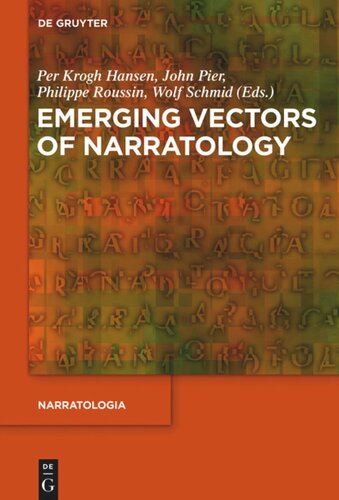

Most ebook files are in PDF format, so you can easily read them using various software such as Foxit Reader or directly on the Google Chrome browser.
Some ebook files are released by publishers in other formats such as .awz, .mobi, .epub, .fb2, etc. You may need to install specific software to read these formats on mobile/PC, such as Calibre.
Please read the tutorial at this link: https://ebookbell.com/faq
We offer FREE conversion to the popular formats you request; however, this may take some time. Therefore, right after payment, please email us, and we will try to provide the service as quickly as possible.
For some exceptional file formats or broken links (if any), please refrain from opening any disputes. Instead, email us first, and we will try to assist within a maximum of 6 hours.
EbookBell Team

4.4
12 reviewsNarratology has been flourishing in recent years thanks to investigations into a broad spectrum of narratives, at the same time diversifying its theoretical and disciplinary scope as it has sought to specify the status of narrative within both society and scientific research. The diverse endeavors engendered by this situation have brought narrative to the forefront of the social and human sciences and have generated new synergies in the research environment.
Emerging Vectors of Narratology brings together 27 state-of-the-art contributions by an international panel of authors that provide insight into the wealth of new developments in the field. The book consists of two sections. "Contexts" includes articles that reframe and refine such topics as the implied author, narrative causation and transmedial forms of narrative; it also investigates various historical and cultural aspects of narrative from the narratological perspective. "Openings" expands on these and other questions by addressing the narrative turn, cognitive issues, narrative complexity and metatheoretical matters.
The book is intended for narratologists as well as for readers in the social and human sciences for whom narrative has become a crucial matrix of inquiry.